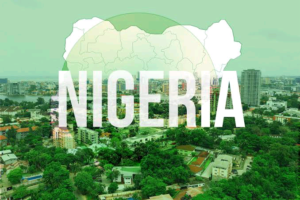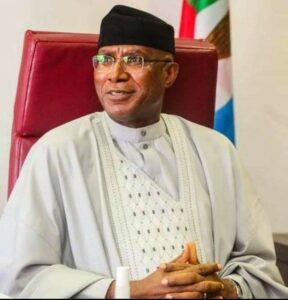Public Relations (PR) Tools in Politics
Charles Ikedikwa Soeze,
It is crystal and abundantly clear that public relations (PR) practice has made its mark in modern business and politics. To this end therefore, there is no possibility that the role of the subject would diminish either now or in the near future. Some of the tools of the trade include special events, publications, social responsibilities and community-base activities.
It is most appropriate to say that PR is sometimes built around events when the event is a special one for example, a 25-year anniversary, a silver golden jubilee/an award night, graduation ceremony among others would qualify as special events. The major advantage of special events is that they provide an opportunity for an organization to tell its story to the relevant publics. There is also the advantage of free media mentions and then an opportunity for entertainment/fun, refreshment among staffers and visitors.
Importantly, large organizations need to carry along their relevant publics hence the need to publish regularly their activities. Apart from news releases that are sent to the mass media (print and broadcast inclusive); organizations should also do in-house publications like newsletters, magazines, bulletins based on their financial background.
It seems to me that one area where some organizations have problem is community relations. This is specifically the situation with the multinational oil companies in the Niger Delta Region. A good and reasonable organization must show concern and or special attention in their host communities. Within their capabilities, such companies should identify areas of needs by their host communities. However, it should always be meaningful and reasonable projects and not the cosmetic type for example, the provision of portable water, building of classroom blocks, construction of town halls, building of churches, and similar gestures will be highly appreciated. Most importantly, it is a welcome development to treat host communities as one would treat in-laws in line with the African culture.
Furthermore, just as individuals and organizations seek to be favourably and positively perceived, so do nations. In fact now that the world is a global village as earlier propounded by a Canadian philosopher, elder statesman, politician, etc, Marshall McLuhan in 1963, the interdependence of nations is taken for granted and as such no country can afford to be an Island unto itself.
Very importantly, governments and nations are now more conscious of how they are perceived by governments and people of other lands. Since PR efforts and programmes are often directed at publics, the publics for international PR are other countries represented by their embassies, ambassadors, special envoys, trade missions, political and social leaders.
In the course of interaction with different nations, there could be cracks, which will not be of good image for the affected countries. Simple cracks when not properly and professionally managed, can lead to shooting war between the affected countries. However, a good PR can quickly intervene and avert such an unhealthy situation.
It is a truism to say that sporting activities have become major instruments of international relations based on their capacity to foster friendship and understanding sports also engender healthy rivalry and a veritable source of entertainment.
From the foregoing, it would be obvious that even on a cursory note a good image has a way of “affecting the price of fish”, as some businessmen often say, without mincing words, a good image percolates the entire fabric of a nation attracting support, understanding, and goodwill. This could be discussed under economy, politics, socio-cultural, etc.
No doubt, the economy is affected for ill, or for good, depending on how a country is perceived. The image of a country in the comity of nations determines whether or not a country attracts foreign investments or not. In view of the poverty pervading most developing countries, the need to attract foreign investments has become a major worry in some countries. In order to make the investment climate favourable to foreigners, one of such measures should be the abrogation of certain laws considered inimical to foreign investments.
On the political front, a good image translates to a good relationship with the outside world. It means respect and regard for our political leaders within and outside the country. On the other hand, an adverse image would cause our leaders to be treated with disregard, even disdain, within and outside our borders. Such a leadership cannot attract any political advantages to the country.
It has been said and with some justifications that travelling is a part of education. Tourists understand and appreciate the above saying. Needless to say that tourism is a foreign exchange earner for some countries like Kenya, Brazil, and others. While conceding that tourists have a large dose of curiosity in them, no tourist would willfully rush to a war-torn zone.
To talk about the tools of communications is to talk about the tools of public relations, Cutlip, Center and Broom (1977) quoted by Ndolo (2000:6) identified the printed word, the spoken word and image as the tools of communication which use three avenues, personal contact, controlled media and public media. However, the technological advances of the 20th century have added other dimensions to tools available to communications across the various sector of society.
In this 21st century, the communications tools can be categorized into printed word, that is, house publications, external house journals, hand books, manuals, book, letters, bulletins, posters, bill boards, inserts and enclosures, brochures, information racks, notice boards, minutes, institutional advertising, newspapers, magazines. In the case of spoken word, we have meetings and conferences, speakers’ bureau, staged events, open houses and plant tours, displays and exhibits, identity programmes, seminars, grapevine, rumours, gossips, telephone. In broadcast media, we have radio, television, cable, motion pictures, slide films, video tapes. While in information technology we have computers, internet.
The international Public Relations Association’s Mexican statement defines public relations as “an art and social science of analyzing trends, predicting their consequences, counseling organizational leaders and implementing the planned programme of actions, which will serve both the organization and the public interest”.
In view of the above definition, the key tasks of public relations are; analyzing trends and predicting their consequences, research into public opinion, attitudes and expectations and advising on necessary actions, counseling based on understanding of human behaviour, establishing two-way communications based on truth and full information, preventing conflict and misunderstanding, practicing media relations, practicing financial communication, working effectively with other organizations, promoting mutual respect and social responsibility, harmonizing the private and public interest, promoting goodwill with employee communications that will attract first class employees and reduce labour turnover, promotion of product and services, projection of corporate identity encouraging interests in international affairs and finally promoting an understanding of democracy.
Based on the above, it is obvious that a good image is something to be pursued by an organization. Countries are also not left out in this business of chasing an enviable image. Desirable as a good image is, it does not come on a platter of gold. In other words, efforts must be made for it to be achieved.
Finally, some of the communications tools currently available to governments, businesses, individual and social relationships have been mentioned. Of particular essence is the usefulness of these tools to the practice of public relations. In view of the fact that reputation management has become critical, nations, organizations, communities, families, etc can decide within acceptable range how and what direction their PR publics would react using their veritable communication tools.
Dr. Charles Ikedikwa Soeze, is a mass communication scholar and a media and public relations consultant.



